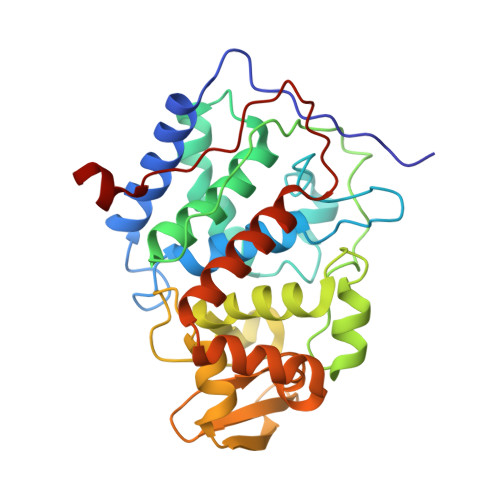Crystal structure of yeast cytochrome c peroxidase refined at 1.7-A resolution
Finzel, B.C., Poulos, T.L., Kraut, J.(1984) J Biol Chem 259: 13027-13036
- PubMed: 6092361
- Primary Citation of Related Structures:
2CYP - PubMed Abstract:
The crystal structure of cytochrome c peroxidase (EC 1.11.1.5) has been refined to an R factor of 0.20 computed for all reflections to 1.7 A. The refined molecular model includes 263 bound water molecules and allows for x-ray scattering by amorphous solvent. The mean positional error in atomic coordinates is estimated to lie between 0.12 and 0.21 A. Two factors are identified which may account for the ability of the enzyme to stabilize high-oxidation states of the heme iron during catalysis: 1) the proximal histidine forms a hydrogen bond with a buried aspartic acid side chain, Asp-235; and 2) the heme environment is more polar than in the cytochromes c or globins, owing to the presence of the partially buried side-chain of Arg-48 and five water molecules bound in close proximity to the heme. Two of these occupy the presumed peroxide-binding site. Two candidates are likely for the side chain that is oxidized to a free radical during formation of Compound I: 1) Trp-51, which rests 3.3 A above the heme plane in close proximity (2.7 A) to the sixth coordination position; and 2) Met-172, which is 3.7 A from the heme. Nucleophilic stabilization of the methionyl cation radical may be possible via Asp-235. His-181 is found to lie coplanar with the heme in a niche between the two propionates near the suspected cytochrome c-binding site. A network of hydrogen bonds involving this histidine may provide a preferred pathway for electron transfer between hemes.
















